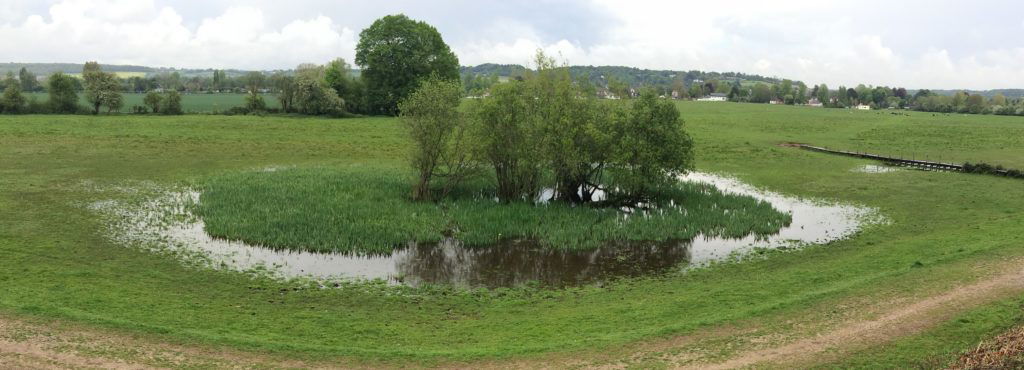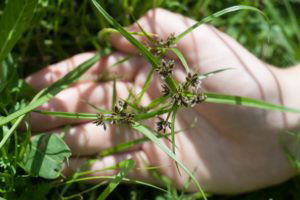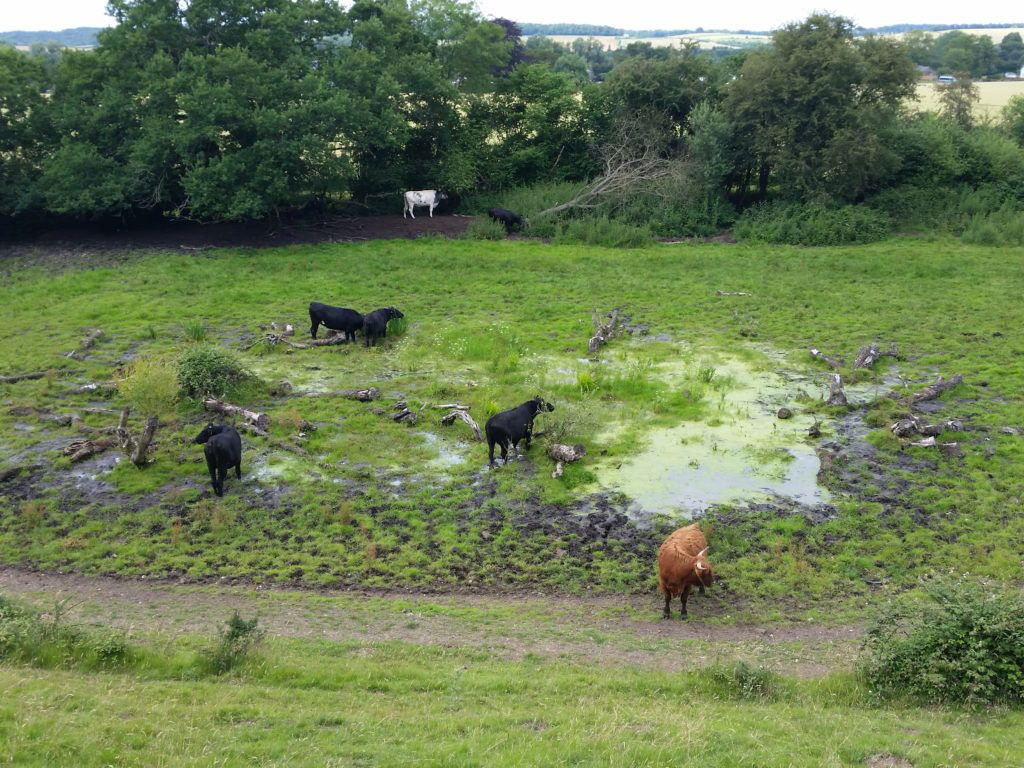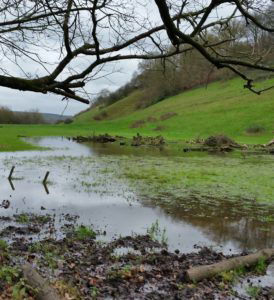Flagship Focus: Cock Marsh 2016
25th October 2016
Explore Cock Marsh Flagship Pond site with project officer Pete, the latest in our Flagship Focus series:
Part of the National Trust’s Maidenhead and Cookham Commons, Cock Marsh is home to some of the most important ponds in the Thames Valley; one of the seventy Flagship Pond sites that Freshwater Habitats Trust is helping to protect through the Heritage Lottery funded People, Ponds & Water project.

The ponds and surrounding grassland on Cock Marsh are home to an exceptionally diverse range of wetland and aquatic plants associated with pristine water quality and a long history of traditional management. The four main ponds lie in a low area of grazing marsh, in a remnant channel of the River Thames, bordered to the south by a chalk escarpment which adds a subtle calcareous influence to the water chemistry. Whilst the site is entirely within the floodplain of the Thames, water quality tests have revealed that the ponds are particularly clean with barely a trace of nitrate or phosphate pollution.
A site for rare plants
The flora of the Cock Marsh ponds is outstanding, with many Red Data Book species present. Tubular Water-dropwort Oenanthe fistulosa, and Marsh Stitchwort Stellaria palustris, which are both Biodiversity Action Plan (BAP) species and categorised as Vulnerable in England, are doing well, along with nationally threatened Round-fruited Rush Juncus compressus and Marsh Arrowgrass Triglochin palustris. A range of wetland plants that are rare in Berkshire and surrounding counties such as Lesser Marshwort Apium inundatum, Fine-leaved Water-dropwort Oenanthe aquatica and Water Violet Hottonia palustris, are also present.

Yet it is an even rarer plant, Brown Galingale Cyperus fuscus, that makes Cock Marsh nationally significant. Brown Galingale is a tiny, inconspicuous but very important sedge that favours the muddy, cattle trodden edges of seasonal ponds. It’s a very rare plant indeed in the UK and probably always has been, having only ever been recorded from 12 sites in England. A lack of regular monitoring for this species nationally means that the current situation isn’t fully understood – we fear the actual number of extant sites is now far fewer.
Traditional management creating the perfect conditions…
The good news is that Brown Galingale is thriving at Cock Marsh. Management of the common by grazing livestock is creating the perfect conditions; from spring the cattle use the ponds to drink from, and seek shade under willows growing in and around some of the ponds. Mature oak trees that bound the site also attract the animals, creating muddy, shaded patches of bare ground where competition is reduced and the Brown Galingale can grow. As the ponds dry down completely in late summer, animals move away from the ponds to drink elsewhere and the plants get chance to flourish – it really couldn’t be better!
Amazingly, many thousands of individual plants were recorded during this summer’s surveys. At this point we simply don’t know if this was an exceptional year or the norm – Brown Galingale populations have a tendency to fluctuate year to year, thriving when conditions (including water levels) are just right. Despite the site being relatively well known for its wetland flora, systematic recording and mapping of Brown Galingale has never taken place before.
 Retaining a mosaic of shade with trees in and around the ponds is critical to keeping this site in good condition. Some shading is very beneficial as livestock create ground disturbance as they seek refuge. Opening up the ponds too much risks them becoming dominated with lush floating grasses – it’s a fine balance that requires experimental management and monitoring to perfect. As with all Flagship Pond sites, the legacy of the project will be a better understanding of requirements for key species. We are drawing this together in a pond management plan with advice based on up to date evidence. The National Trust ranger team have also received training on wetland plant identification to ensure they can pass on information to their visitors.
Retaining a mosaic of shade with trees in and around the ponds is critical to keeping this site in good condition. Some shading is very beneficial as livestock create ground disturbance as they seek refuge. Opening up the ponds too much risks them becoming dominated with lush floating grasses – it’s a fine balance that requires experimental management and monitoring to perfect. As with all Flagship Pond sites, the legacy of the project will be a better understanding of requirements for key species. We are drawing this together in a pond management plan with advice based on up to date evidence. The National Trust ranger team have also received training on wetland plant identification to ensure they can pass on information to their visitors.
Where next for the Flagship Ponds work at Cock Marsh?
 We still have a lot to learn about the ponds at Cock Marsh, and the precise requirements for Brown Galingale. This means repeating survey effort and setting in place long term monitoring for the future. Although the site is well used and regular visitors will recognise the ponds as they descend the track down onto the marsh, many of the species of interest will undoubtedly be overlooked. We think people deserve to see more high quality ponds like these, so next summer we’ll leading a series of guided walks at the site encouraging local people to come and learn a little more about this wonderful site.
We still have a lot to learn about the ponds at Cock Marsh, and the precise requirements for Brown Galingale. This means repeating survey effort and setting in place long term monitoring for the future. Although the site is well used and regular visitors will recognise the ponds as they descend the track down onto the marsh, many of the species of interest will undoubtedly be overlooked. We think people deserve to see more high quality ponds like these, so next summer we’ll leading a series of guided walks at the site encouraging local people to come and learn a little more about this wonderful site.
We are also keen to learn more about the history of the ponds and the marsh. Local photographer Simon Barber is documenting the site by collecting photographs and stories from visitors. Simon is keen to speak to other local people who know the site well or have connections to the marsh and is also interested in collecting old photos of the site. Can you help us with photos or stories?
Want more information?
- To keep up to date with the People, Ponds & Water project, sign up for the newsletter.
- For information about Cock Marsh contact Regional Officer for Central England Pete Case on pcase@freshwaterhabitats.org.uk.
- Take a look at Plantlife’s fact sheet on Brown Galingale.
- See the Million Ponds Project advice sheet on creating ponds for Brown Galingale. This is full of great information but we now need to update it based on what we’re learning about the plant and shading of ponds at Cock Marsh!
